Australia’s new hi-tech fighter jets can ‘operate in a battle space with impunity’
THEY’VE been dubbed the iPhone of fighter jets and the newest addition to the Australian military will allow pilots to “operate in a battle space with impunity”.
THE world’s most lethal fighter jet is on its way to Australia.
With missiles and bombs concealed inside the jet, advanced stealth technology, electronic warfare capabilities, a top speed above 1900km/h (Mach 1.6) — the F-35 Lightning II has been dubbed the iPhone of fighter jets.
And by December 10, the Royal Australian Air Force will have two Joint Strike Fighters, as the jet is also known, on the tarmac at Williamtown air base in the Hunter Valley of NSW.
But despite their imminent arrival, there are some surprising things you might not know.
THE DOG DAYS ARE OVER
First up, the days of Top Gun-style dogfights are over.

Fighter jets aren’t supposed to come within eyesight of each other any more.
In the case of the F-35, it’s possible to spot an enemy from hundreds of kilometres away with its advanced sensor systems.
It then adds sophisticated stealth to the mix to ensure they can’t be detected until they get much closer to an enemy.
The next generation of ground-based defence systems are expected to be capable of attacking a fourth generation fighter jet, like the F-16, from 400km away, according to Lockheed Martin F-35 International Business Development director Steve Over.
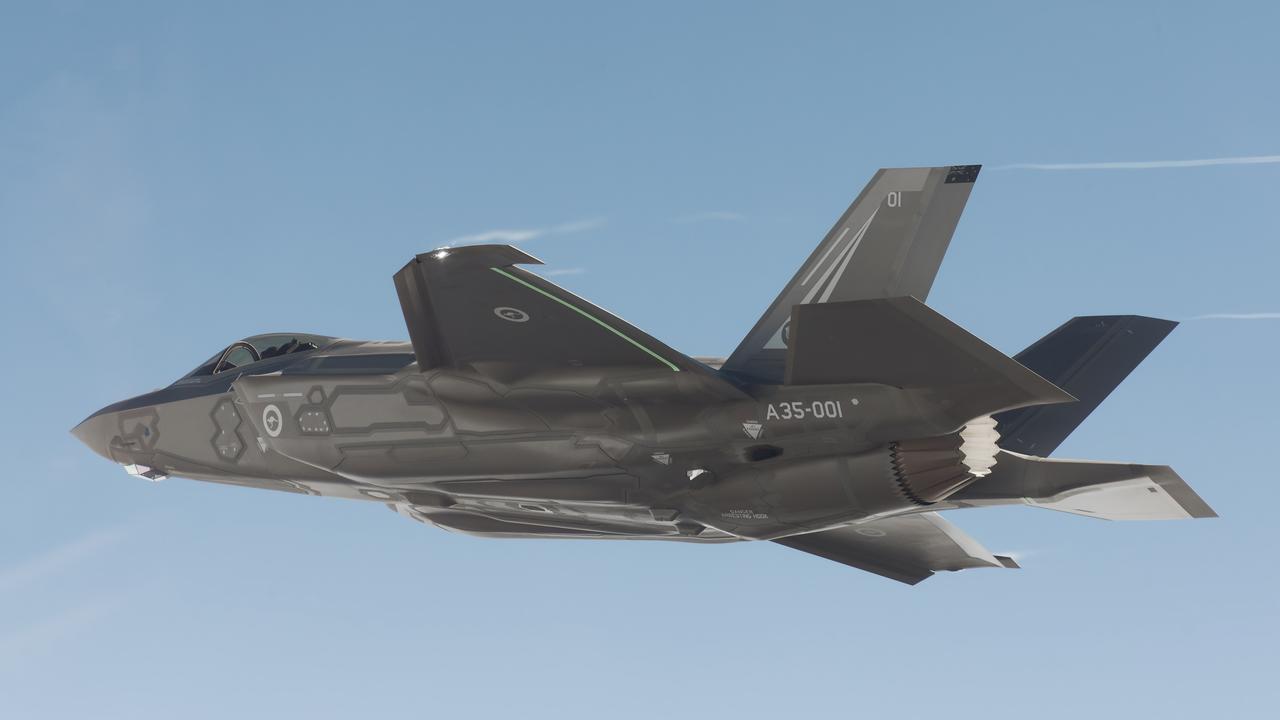
“If you are dealing with that new tech, fourth generation is just not survivable,” Mr Over said.
“We replace the need for speed with stealth which allows you to operate in a battle space with impunity.”
Sophisticated efforts to reduce the F-35s visibility on radar start with keeping all of its weapons and fuel inside. Even the engine’s compressor, usually what gives a stealth aircraft away, is hidden behind a curved air intake system lined with radar absorbing paint.
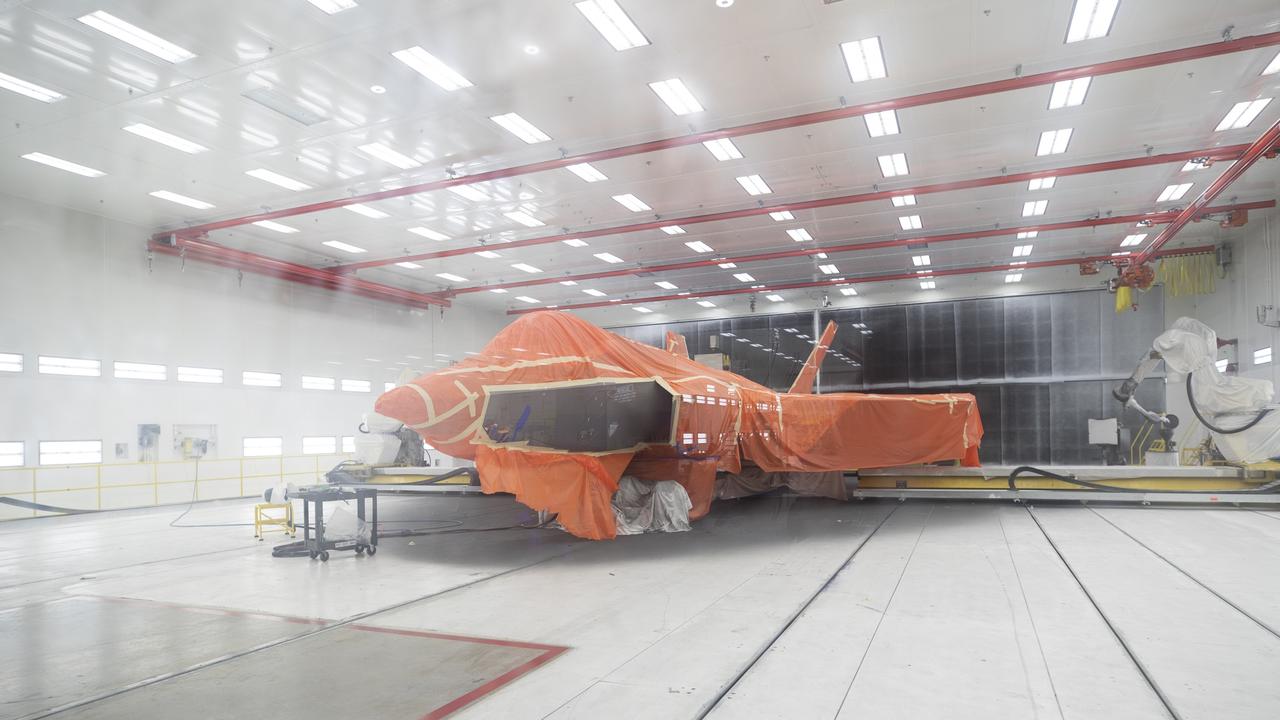
Adding to this is an on-board database of threats that the jet can detect and either avoid or attack before the threats are aware it is there — potentially using its electronic warfare systems to suppress their detection capabilities rather than destroy them.
Mr Over admitted that doesn’t make them invisible, but it gets them close.
“The F35 is not invisible, but it will know the range of the radar systems being used to target them,” he said.
THEY’RE INVISIBLE — TO THE PILOT
The jets actually are invisible, as far as the pilot is concerned.
The advanced sensors that make up an electro-optical distributed aperture system (DAS, for short) as well as cameras set into the outside of the aircraft feed into an augmented reality pilot helmet that will literally allow them to look through the floor of the aircraft.
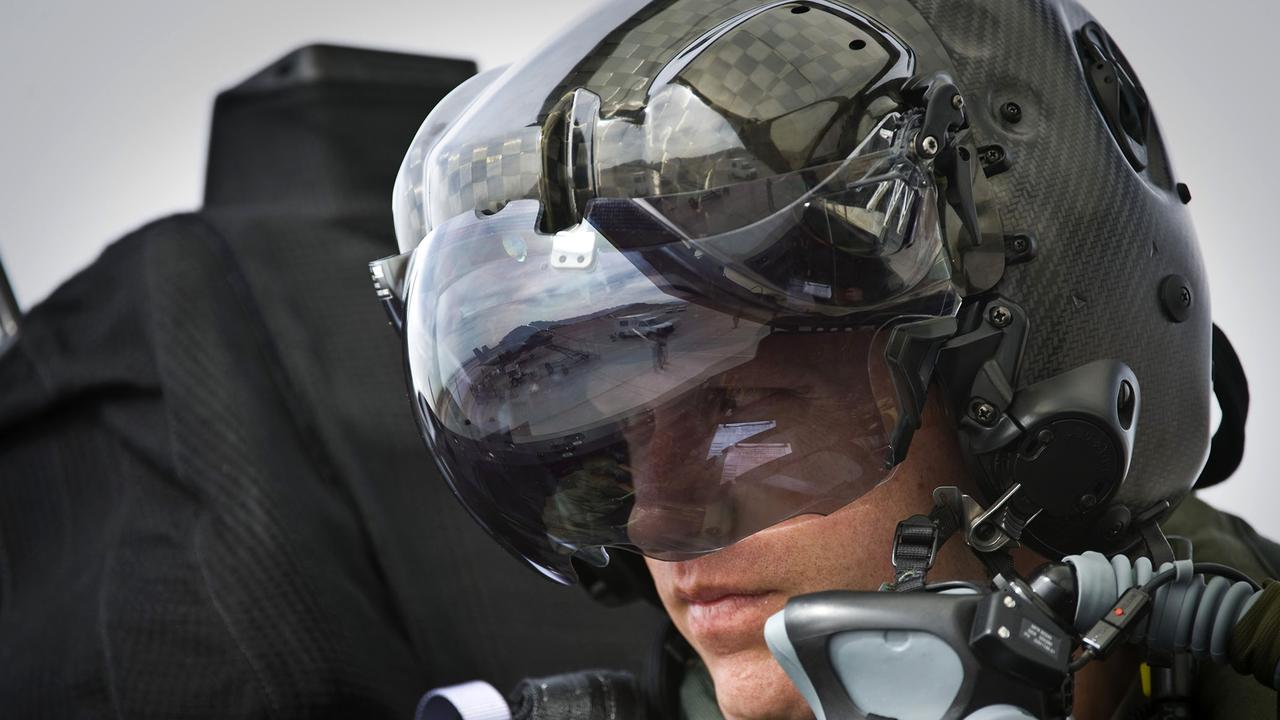
A heads up display also shows them recognised enemy and friendly positions in the battle space, as well as automatically scanning for more in all directions.
That includes for 100s of miles behind them — or below them — effectively giving the JSF a rear view mirror to detect threats and allowing them to operate more remotely than their fourth generation forebears.
While traditional fighter jet squadrons fly within eyesight of each other to warn of any enemies behind them, the F-35 will be able to cover much more ground.
“You will see F35 formations where they are flying up to 20 miles apart,” Mr Over said.
RESTORED WORLD WAR II BICYCLES HELP BUILD THEM
Despite the hi-tech features marking the F-35 as the world’s most advanced fighter jet, they’re put together in a factory that dates back to 1941.
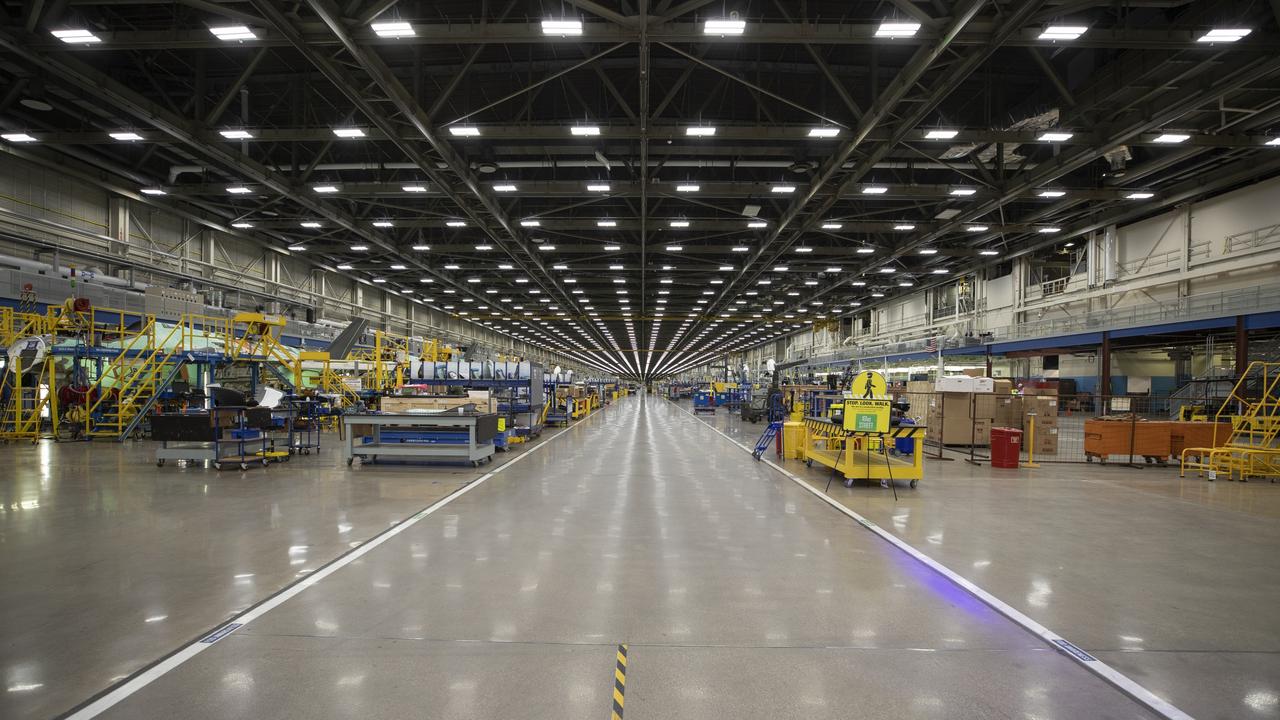
The Fort Worth, Texas, home to Lockheed Martin’s production line for the F-35s was originally built to create the B24 Liberator Bomber — for World War II.
It’s had its share of updates since then, now featuring robotics and an overhead rail system capable of transporting the 13.29 tonne aircraft along a factory floor long enough that they use golf carts to get around.
Or, reconditioned bikes that dates back to World War II.
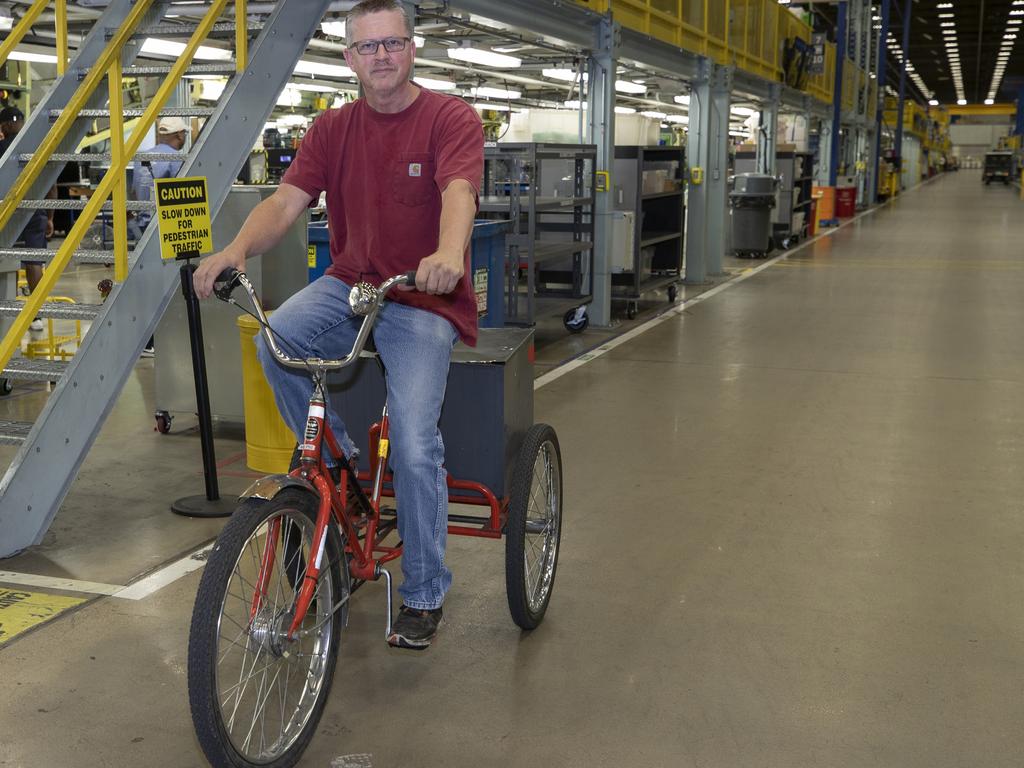
“A lot of them have been restored by the workers at the factory,” said Lockheed Martin’s Kevin McCormack.
Typically the bikes cart a payload of tools or small parts with one of the factory workers getting some exercise along the way.
THEY’RE NOT DESIGNED FOR TODAY’S CONFLICTS
Earlier this year the F35 made its combat debut over the Middle East with the Israeli air force chief confirming they had been used to strike a pair of targets in May.
But they haven’t been designed with the typical Middle Eastern combat scenario in mind, according to Mr Over.
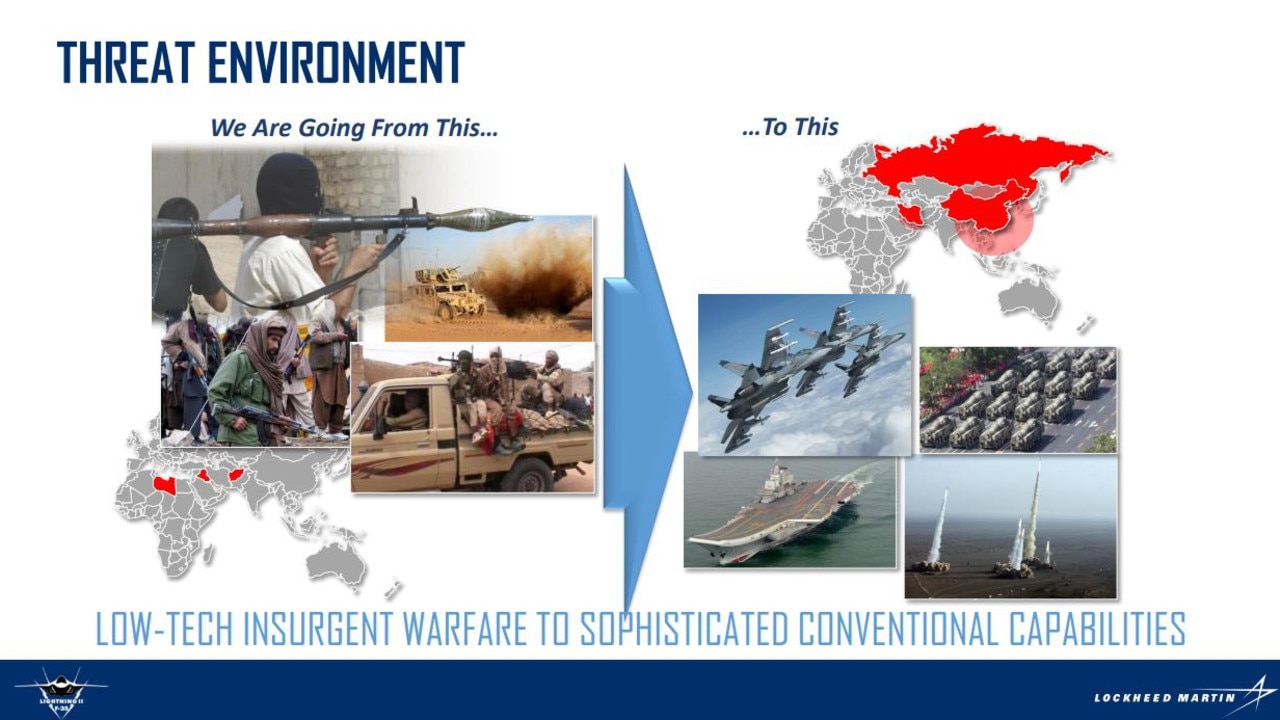
In fact, he freely admitted if that’s all Australia faced in the next few decades, the JSF wouldn’t be the right weapon for the job.
“As the US, and even Australia has demonstrated, if that’s the only threat you are concerned with from now and forever into the future, remotely piloted vehicles are probably better suited to that type of operation,” Mr Over said.
“What the F35 is really about is providing nations like the US and Australia the capability not only to deal with counterinsurgency operations, but to also deal with large nation state actors.”
That’s not to say he expects war with China or Russia, but he does expect that one or both of those nations would sell their most sophisticated weapons systems.
“Without question, the US, Australia and all out allies are going to be facing the best Russian and Chinese military equipment around the globe,” Mr Over said.
That includes those nations’ own fifth generation fighter jets; which Lockheed Martin remains confident are 15 years behind the JSF.
THEY’LL GET MORE LETHAL OVER TIME
The JSF is expected to be a part of Australia’s military for decades to come.
The F-35 has been designed to be upgraded, with expectations it will receive hundreds of software upgrades over the life of the program.
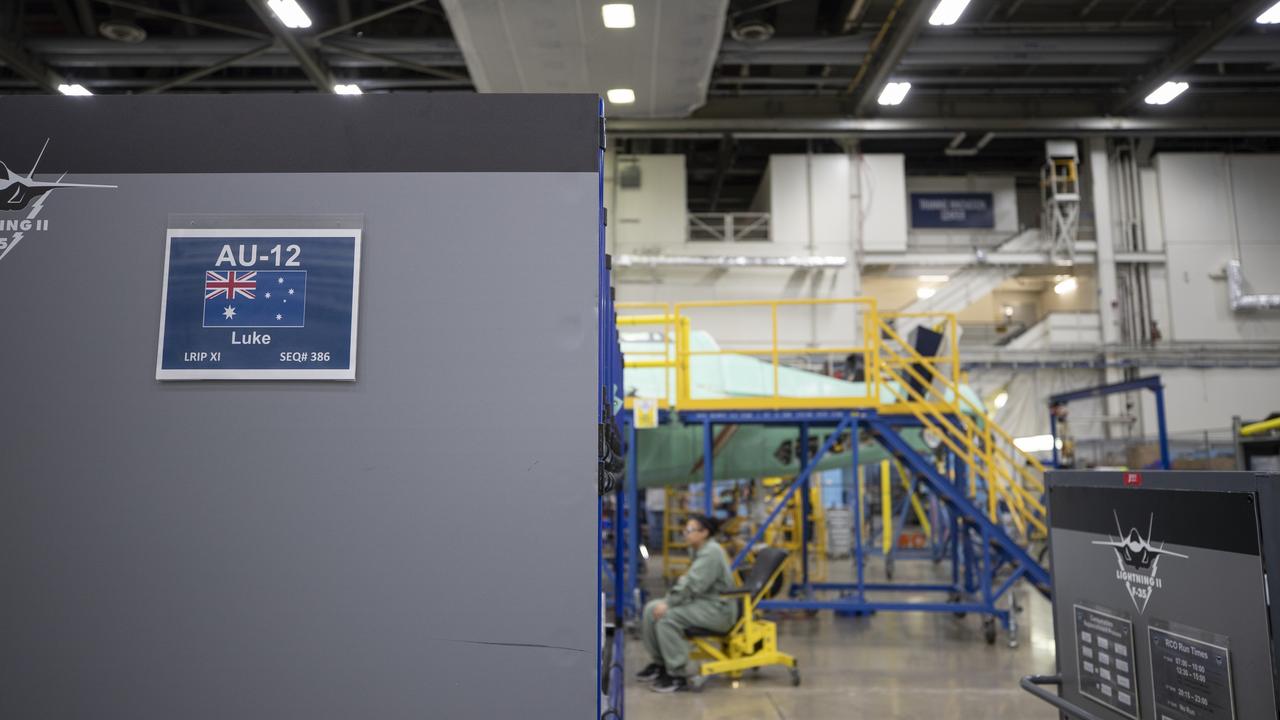
These will progressively allow the advanced sensors and targeting systems on board the JSF to link up with the next generation of submarines and frigates set to join Australia’s navy, giving them the ability to call in missiles remotely.
Making the F-35 just as lethal even when unarmed.
But it’s a stack of computer modules sitting back on the ground at base that will give the F-35 its most impressive capability: the ability to learn.
The Autonomic Logistics Information System (ALIS) will capture masses of data from every flight and every bit of maintenance, right down to pilot’s recording a stretched seam in their flight suit.

It will then analyse that data and learn from it. Predicting in advance when maintenance or replacement parts will be required, maximising the F-35s availability to fight.
“If the planes aren’t flying, they aren’t lethal,” Mr Over said.
As more and more missions are flown the ALIS will become able to predict which pilot will most effectively fly a particular mission — maximising the F-35s lethality.
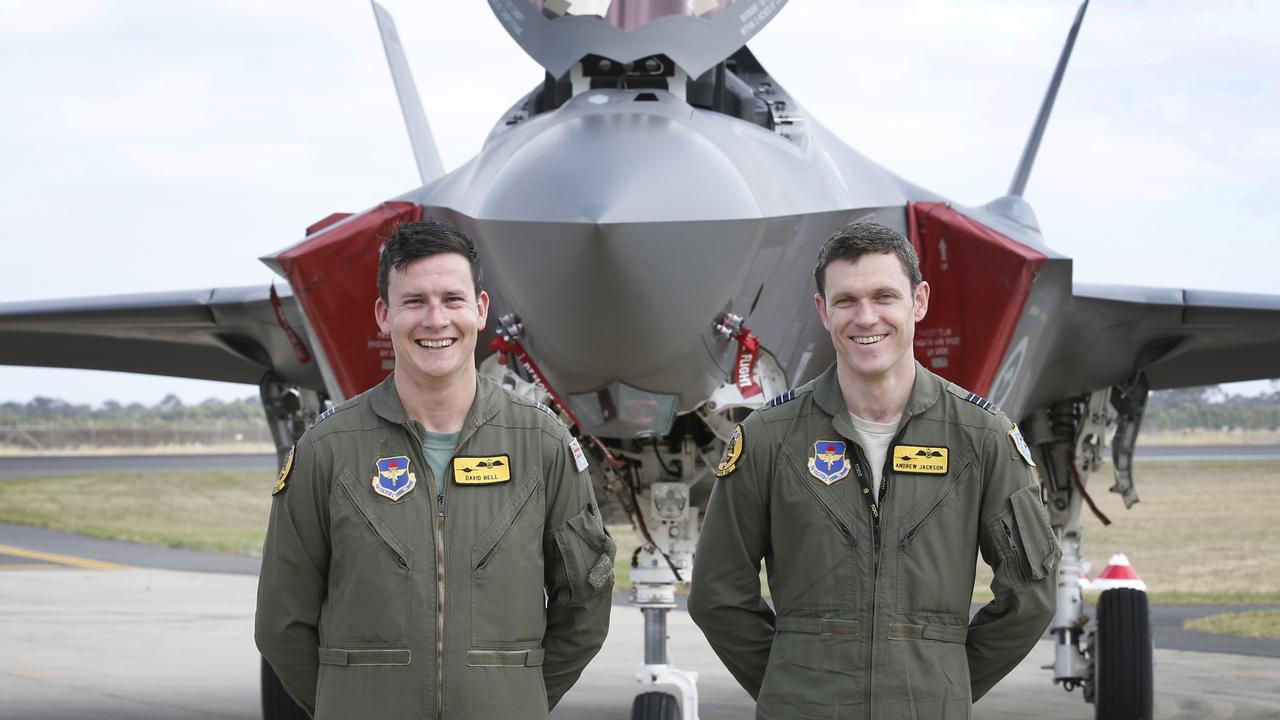
The pilots will also become safer as upgrades to the plane are made, including an automated system that kicks in when risky ‘high G’ manoeuvres, usually a turn so sharp it affects blood and oxygen flow to the brain, are attempted — potentially saving a pilots life if they were to pass out during the manoeuvre.
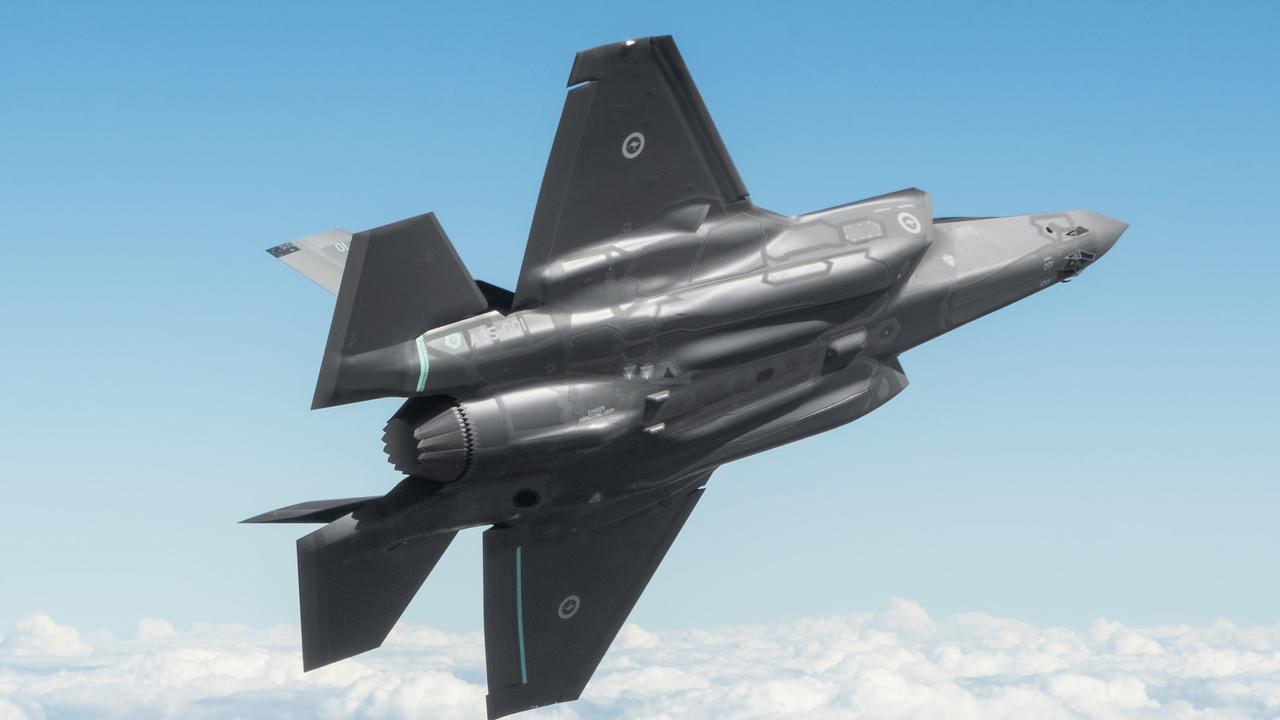
The writer toured facilities in the United States as a guest of Lockheed Martin.



